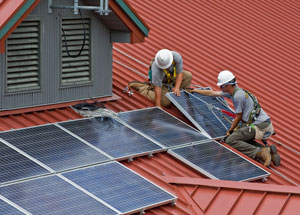Variation in PV Systems
 Unfortunately, there is no universal standard for all PV systems. Here are some common variations in the ways they are set up:
Unfortunately, there is no universal standard for all PV systems. Here are some common variations in the ways they are set up:
- Commercial versus residential systems: Both types generally use the same components, but commercial systems produce more energy at higher voltages, and they may contain additional components such as step-up transformers. However, remember that residential systems still pose an equal risk of electrocution.
- Control systems: Some PV systems are controlled from a single point, while some have multiple shutoff switches. Commercial systems, due to their larger sizes, tend to have more complex controls. Not every system can be controlled in the same way.
- Code compliance: Some systems may not be entirely code-compliant, particularly if someone inexperienced installed them. And since local building codes can vary, even a technically code-compliant system may not have the same safety features as another system in a different location.
Each PV system can vary considerably in appearance, which is why it is crucial to become familiar with all the features and components of PV systems, and to remain alert when dealing with one.
There is one universal rule when responding to an emergency involving a PV system: ALWAYS assume that all PV components are energized. Even if it is dark, the panels are covered or the system is powered down, voltage remains inside. To stay safe, treat the whole system as if it is energized at all times.
